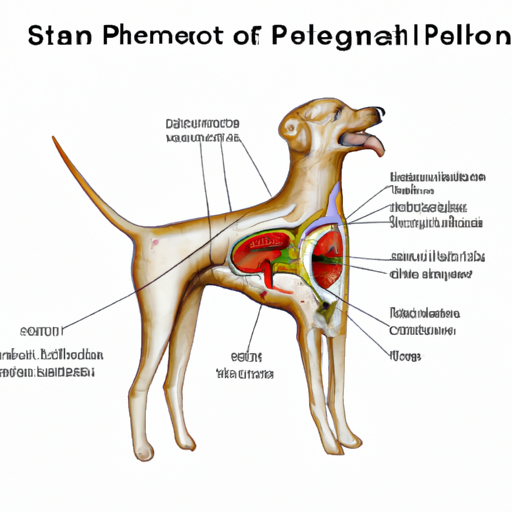Understanding Your Dog’s Anatomy
As a caregiver, it’s natural for you to be curious about your pet’s anatomy. You’re not just a pet owner, you’re a guardian – a diligent caretaker who wants to understand every aspect of their furry friend’s health and wellness. Your dog’s spleen, a key organ in their body, sits tucked away in the abdominal cavity, nestled between the stomach and the diaphragm. It’s not readily visible or palpable, but it’s there, performing crucial functions such as filtering blood and storing red blood cells.
The Role of the Spleen in Your Dog’s Body
Your dog’s spleen, though hidden, plays a pivotal role in their overall health. Let’s delve a little deeper into its functions:
- Blood Filtration: The spleen acts as a filter for your dog’s blood. It removes old or damaged blood cells, keeping their circulatory system healthy.
- Blood Storage: In times of need, the spleen serves as a reservoir, releasing stored blood cells into the bloodstream.
- Immune Response: The spleen helps your dog defend against disease, producing white blood cells that combat infections.
Recognizing Signs of a Healthy Spleen
Keeping a watchful eye on your pet’s health is crucial. While you can’t physically see your dog’s spleen, you can monitor its health through your dog’s overall well-being. A healthy spleen contributes to:
- Steady, balanced energy levels
- Regular, healthy appetite
- Normal heart rate and breathing
- Absence of abdominal pain or discomfort
Identifying Potential Spleen Problems
Just like any other organ, the spleen can be subject to various health issues. Being aware of these potential problems will help you provide the best possible care for your dog. Some common spleen issues include:
- Splenomegaly: This is an enlargement of the spleen, often caused by infections, inflammation, or cancer.
- Splenic Torsion: A condition where the spleen twists upon itself, disrupting blood flow.
- Splenic Tumors: These are growths that can be benign or malignant.
| Condition | Symptoms | Treatment |
|---|---|---|
| Splenomegaly | Lethargy, decreased appetite, abdominal swelling | Depends on the cause, may include antibiotics or surgery |
| Splenic Torsion | Vomiting, abdominal pain, collapse | Emergency surgery |
| Splenic Tumors | Weakness, weight loss, sudden collapse | Surgery, chemotherapy |
Frequently Asked Questions
Q: Can a dog live without a spleen?
A: Yes, dogs can live without a spleen, though they may be more susceptible to infections.
Q: How can I keep my dog’s spleen healthy?
A: Regular vet check-ups, a balanced diet, and plenty of exercises can help keep your dog’s spleen healthy.
Q: What are the signs of a spleen problem in a dog?
A: Signs can include lethargy, decreased appetite, abdominal swelling, or sudden collapse. If you observe any of these, seek immediate veterinary care.
Q: How is a spleen problem diagnosed in a dog?
A: Diagnosis usually involves physical examination, blood tests, and imaging such as ultrasound or x-ray.
Remember, you are your pet’s first line of defense when it comes to their health. Stay vigilant, stay informed, and you’ll be well-equipped to give your dog the care they deserve.



